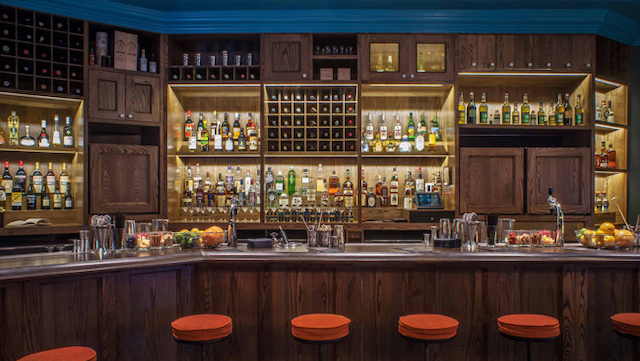Bars and restaurants often go to great lengths in order to make their clientele as comfortable as possible — as they should. However, while that “just right” lighting and perfectly thought-out décor is a must for any successful establishment, the same effort should also be placed on getting it right for the employees.
Stop and think about how you feel after a long, 12-hour shift. Now think about how you feel after pulling five of those shifts in a single week. When a bar layout is strategically created to increase efficiency, it reduces overall strain and fatigue for staff. Whether you’re working one short shift or five long ones, that kind of work setting makes a huge difference in your mental and physical health.
“Prioritizing the staff just makes sense,” says Joaquín Simó, general manager of NYC’s Pouring Ribbons. When designing their space, Pouring Ribbons worked with a design team to ensure that ergonomics was front and center in all considerations. “An ergonomic and efficient bar station can pump out more drinks in less time with less effort. That results in higher sales numbers, which benefit both the house, with increased profits, and the staff, with more tips.”
In the Intelligent Design seminar at this year’s Tales of the Cocktail, Simó discussed a few of the tricks and shortcuts he and his team have taken to design their bar for maximum comfort and efficiency, from transforming a computer desk into a mobile prep station to rubberize certain surfaces to prevent bruising. We got the DL from Simó on some of Pouring Ribbons’ most cost-effective design hacks.
1. Rubberized Speed Rails
“Double speed rails can be really tough on a bartender, and the extra distance from the drink rail means most bartenders are slightly leaning forward every time they’re making a drink,” notes Simó. “We added foam rubber padding to the front of the speed rails to provide some protective cushioning and minimize bruising.”
2. Ice Cream Scoop Dipper Wells
These allow the staff to re-use metal tasting spoons instead of throwing away hundreds of plastic ones each shift. They also allow bartenders to passively rinse off barware during service, and ensures that cleaning speed pourers at the end of the night is easy and thorough.
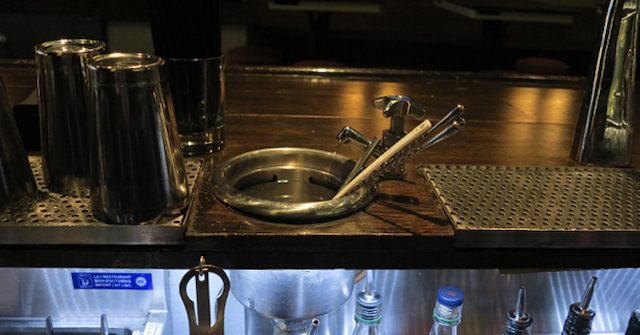 The ice cream dipper well at Pouring Ribbons limits waste from plastic spoons and allows easier rinsing during service.
The ice cream dipper well at Pouring Ribbons limits waste from plastic spoons and allows easier rinsing during service.
3. Foot Pedals on All Sinks
“I can’t say enough about how much people love this,” he says. “It takes about a shift to get used to it, then you can never go back. Why anyone would ever want to touch a faucet with sticky hands is beyond me.”
4. Ice Machine Location
The Pouring Ribbons ice machine is located seven feet from the service well, and there’s a small window right above the dishwasher so any staffer on the floor can quickly load a couple buckets of ice and hand it off to the bartender. “So much easier than running up and down stairs with ice buckets,” notes Simó.
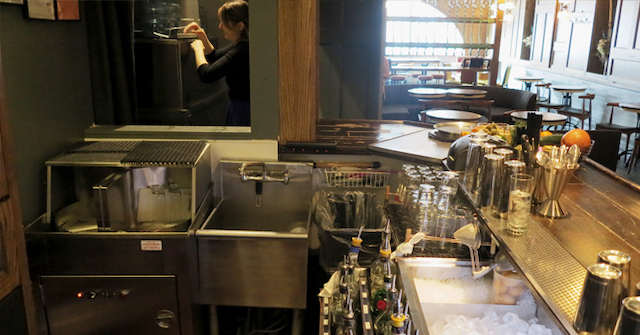 The window into the ice machine room allows staff to easily hand off buckets of ice to bartenders.
The window into the ice machine room allows staff to easily hand off buckets of ice to bartenders.
5. Back-of-Bar Step Installation
Pouring Ribbons installed four sets of steps at the back of their bar, each with accompanying handles, to ensure that staff can safely secure themselves as they reach for backup bottles located high above them.
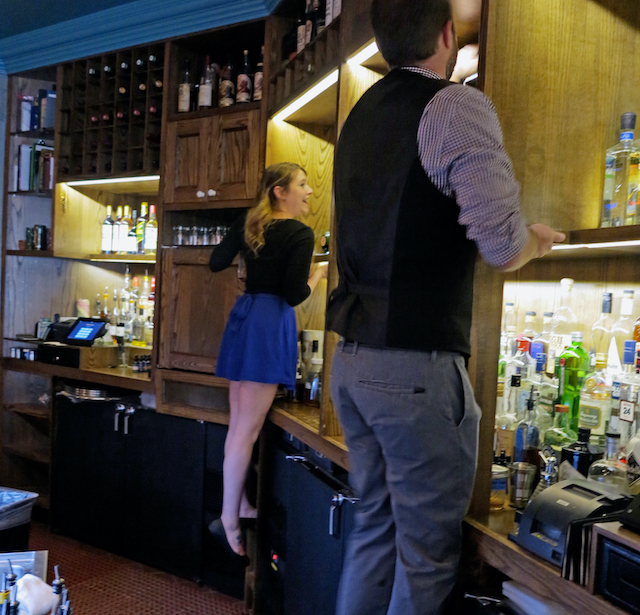 Small stepladders with handrails allow bartenders to easily access bottles on higher shelves, without the use of large ladders cutting into floorspace.
Small stepladders with handrails allow bartenders to easily access bottles on higher shelves, without the use of large ladders cutting into floorspace.
6. Multiple Glass Chillers At Shoulder Height
Each station has its own glass chiller located directly behind it, and it’s located at shoulder-height to minimize strain. “Stemmed glasses, fizz glasses and two types of large-format ice are safely and easily accessible to staff,” says Simó. “No more bending over to reach into a dark freezer for a slippery, frozen glass.”
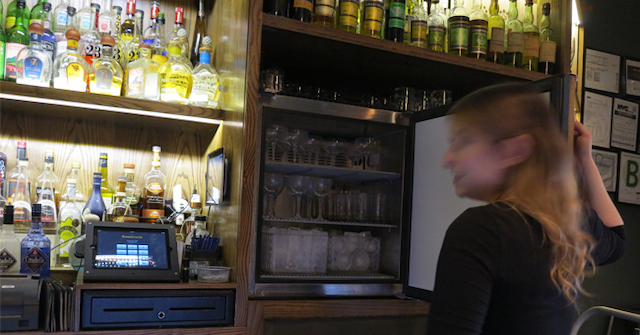 The shoulder-height location of glass chillers means easier access with minimal strain.
The shoulder-height location of glass chillers means easier access with minimal strain.
7. Rolling Computer Desk for Prep
“We have very little back-of-house storage space, and no back-of-house prep space at all,” says Simó. “All pre-shift prep has to be done on the bar, so we bought a rolling computer desk from a hardware store and outfitted it with all the tools we would need to get ready for a shift.”
That includes the following: Cambros and quart containers, digital scales, induction burners, pots, citrus juicer, VitaMix blender, auger-style extractor, and knives and strainers of all sizes. “Everything you need to make syrups, juices, infusions, and prep garnishes is all in one place, with a very small and portable footprint,” he says.
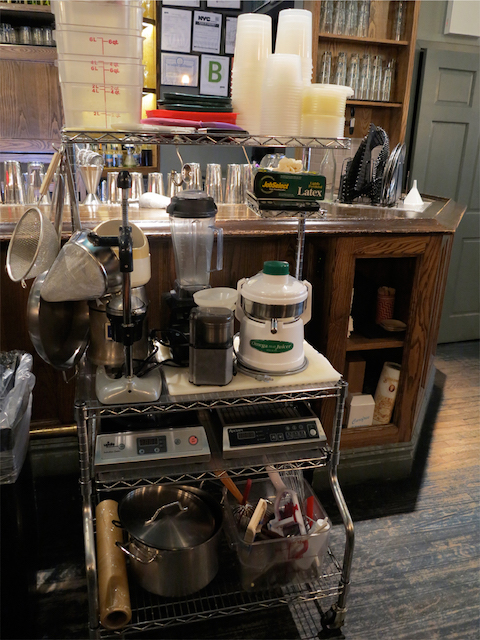 For a mobile prep station, Pouring Ribbons outfitted a rolling computer desk with all the tools and equipment needed to prepare garnishes, syrups, juices and infusions for a shift.
For a mobile prep station, Pouring Ribbons outfitted a rolling computer desk with all the tools and equipment needed to prepare garnishes, syrups, juices and infusions for a shift.
Lastly, when determining how to upgrade your own bar, scan your work space with a critical eye and default to your staff. They’ll have a very good handle on what is – and what isn’t – working.


